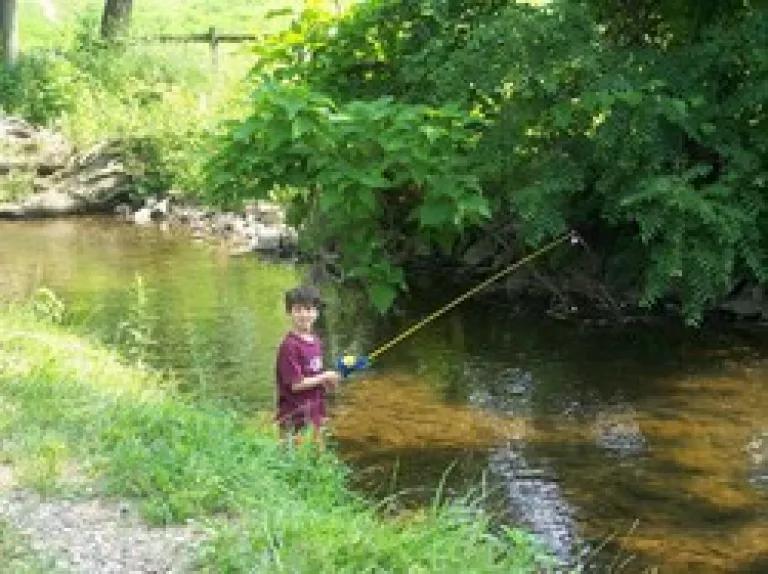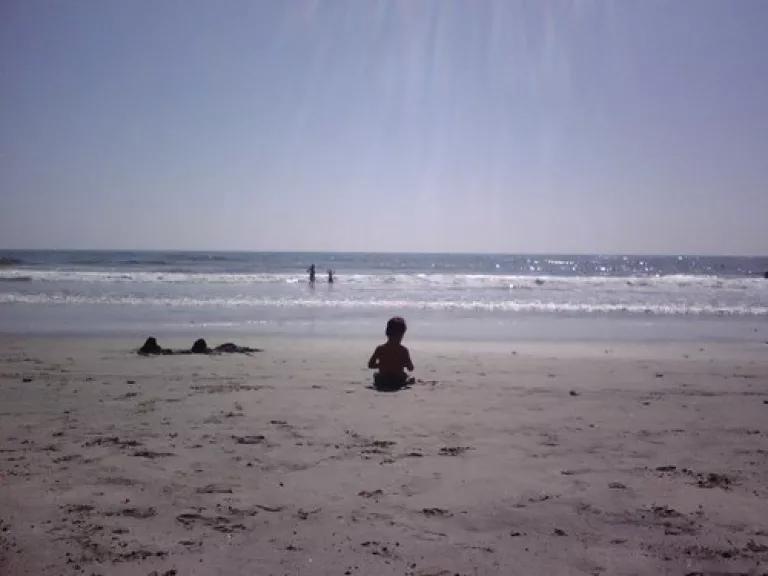
Recently, a number of Senators, led by Senator John Barrasso (R-Wyo.), introduced a bill to kill the Environmental Protection Agency and Army Corps of Engineers' Clean Water Rule, a commonsense initiative to restore protections against pollution that once existed for a variety of small, seasonal, and rain-dependent water bodies, but that have been eroded by policies implemented in the past decade or so. This post analyzes the new bill, misleadingly titled the "Federal Water Quality Protection Act."
If you agree that the legislation is dangerous and that the Clean Water Rule should be allowed to move forward, please let your Senator know. (You can access a list of Senators and contact information from this link.)
The Bill Relies on False Premises.
For starters, the new bill is based on assumptions that are simply inaccurate.
False Premise One: The bill's sponsors claim that it is a necessary action to address inadequate consultation by the agencies in developing the Clean Water Rule. That's hogwash. The agencies had more than 400 meetings with stakeholders that care about what water bodies the law can protect. The list of folks with whom EPA headquarters staff met with is lengthy and inclusive, as is as the list of people consulted by EPA regional offices. More than a million comments flooded into the agencies, some 87 percent of which supported the rule. Moreover, this rulemaking process is the latest chapter in more than a decade of public debate about the proper scope of the rule; in short, the issue has been fully vetted.
False Premise Two: The bill suggests that exempting waters from federal coverage is no big deal because states have strong programs that will capture waters that it is important to protect. But the last time the Supreme Court considered this issue, more than 30 states submitted a brief arguing that small streams and nearby wetlands deserved federal protection. Their rationale was three-fold:
- "First, water flows downhill, and each of the lower 48 States has water bodies that are downstream of one or more other States."
- "Second, maintaining consistency among water pollution programs throughout the nation is essential. The Clean Water Act is key to achieving this relative parity, because it creates a federal 'floor' for water pollution control."
- "Third, over the past three decades, the States have come to rely on the Clean Water Act's core provisions and have structured their own water pollution programs accordingly. The States already play a vital role in administering parts of the Clean Water Act, but they would be heavily burdened, both administratively and financially, if forced to assume sole responsibility for regulating fill activities in wetlands adjacent to non-navigable tributaries."
In addition to the states' own compelling arguments in favor of a national baseline of protections, an effective rule protects people by providing a safety net when their own states have legal limitations on adopting safeguards that go beyond the federal minimum. That's an important consideration; a few years ago, the Environmental Law Institute published a 50-state analysis of constraints on protecting waters beyond the federal rules, and found:
Over two-thirds of U.S. states, 36 in all, have laws that could restrict the authority of state agencies or localities to regulate waters left unprotected by the federal Clean Water Act. These restrictions take the form of absolute or qualified prohibitions that require state law to be "no more stringent than" federal law; property rights limitations; or a combination of the two. Such provisions constrain, and in some instances eliminate, the authority of state or local regulators to protect aquatic resources whose Clean Water Act coverage has disappeared or been rendered uncertain....
Given these factors, it is not surprising that when the Bush administration considered rolling back the Clean Water Act rules in the early 2000s, states overwhelmingly responded that they wanted and needed strong federal protections. A colleague and I submitted these state comments to the agencies for the record of the Clean Water Rule, and you can see how your state came down by reviewing them here.
The Bill Creates New Barriers to Protecting Important Waters.

The bill would create new and unscientific rules for determining whether waterways can be protected and these rules would put a thumb on the scale against safeguarding many types of waters. Consequently, the sponsors of the will effectively disregard the copious science on which the Clean Water Rule is based; the agencies compiled more than 1,200 peer reviewed scientific publications that together demonstrated that small, seasonal, and rain-dependent streams, water bodies nearby such tributaries, and various kinds of other waters have critical impacts on the health of downstream waters. Yet this bill would hamstring the agencies' ability to protect various kinds of things that the science shows are critical to water quality.
Barrier One: Many streams would be harder to protect. The bill would instruct the agencies to include tributaries identified in a database maintained by the U.S. Geological Survey, but that is only part of the story. The bill tells the agencies to use a version of that data set that has significant acknowledged limitations - it doesn't generally pick up streams that are less than a mile long, for example. (Ironically, higher-resolution data are available, but the bill - likely because its authors have no interest in protecting the resources that show up on better maps - would intentionally ignore this science.) Although the bill would theoretically allow other tributaries to be protected, it would erect an enormous hurdle to doing so by refusing protection unless it can be shown that pollutants from any single stream would degrade water quality in a navigable waterway.
Barrier Two: Wetlands bordering tributary streams would also be hard to protect - the bill appears to require a wetland-by-wetland analysis of their capacity to prevent pollutants moving into navigable waterways.
These first two barriers rely on case-by-case schemes that resemble the current policy developed during the Bush administration (and still governing decisions in the field). People widely agree that policy is time-consuming and inconsistently implemented from place to place. Worst of all, looking only at individual water bodies in isolation is completely unscientific; the independent Science Advisory Board strongly affirmed that the collective function of these waters is closely related to downstream water quality, even if any individual one's role may be hard to tease out. And the bill's case-by-case approach is even weaker than the current weak practice, because it looks exclusively at the movement of pollutants, whereas current policy also considers physical factors (like whether upstream waters contribute to or help abate downstream flooding) and biological factors (such as whether upstream waters provide spawning grounds for fish that live and are often caught downstream).
Barrier Three: So-called "isolated" waters would not be protected. The bill accomplishes this by demanding the exclusion of any "isolated pond, whether natural or manmade," and by only allowing the protection of wetlands that are "next to" other protected waterways. The effect of such an exemption would be to allow dumping of all manner of wastes into wetlands or ponds, even with substantial groundwater connections to other waterways, or even if they help keep downstream waters safe and clean by trapping flood water or filtering out pollution. These kinds of connections reveal that the very notion of a truly "isolated" water body is a fiction, yet this bill would rely on that fiction to deny Clean Water Act protections for a wide variety of waterways, including an estimated 20 percent of the 110 million acres of wetlands in the continental U.S.
Barrier Four: The bill appears to exclude (or at least raise major questions about) a variety of long-protected water bodies. By defining "body of water" to mean "a traditional navigable water, territorial sea, river, stream, lake, pond, or wetlands," and by directing the agencies to exclude "water that is not located within a body of water," the bill seems to ignore many man-made tributaries, even where they essentially replace natural streams, and even though such waters have obvious and significant impacts on downstream waters. Man-made tributaries also have been covered by the law since the earliest days of its implementation.

The Bill Creates Far More Confusion than it Resolves.
The bill is littered with provisions that will likely have a surface appeal to some folks that have urged the agencies to focus on water bodies of consequence. That's a reasonable request, but the bill's prescription for many features only serves to create new questions about what's in and out.
Ambiguity One: The bill would exclude systems like stormwater conveyances, but the real world is much more complex than the bill seems to presume. In some places, clearly important waterways are contained within a jurisdiction's stormwater system - the Los Angeles River is a classic example. If these features are not covered by the law, discharges from industrial operations or sewage treatment plants into them would not need to follow the Clean Water Act's requirements. Developing final rules that balance reasonable concerns about how these intertwined systems and resources should be treated is something the expert agencies should handle, and grandstanding members of Congress should step aside.
Ambiguity Two: A new, vague provision would cut out "any water that is no longer a water of the United States" because of an action taken under a permit to discharge dredged or fill material. This section is opaque at best, but might mean that if someone gets a permit for a dam, to create a drinking water supply reservoir, for instance, and the result is an "isolated" water, that resulting water is not protected. That'd contradict years of regulatory coverage of impoundments.
Ambiguity Three: The bill seems to encourage the exclusion of rain-dependent streams, even ones that meet the bill's new, un-protective standards. It requires the agencies to consult with various entities (which, as noted above, they already have done) and, during such consultation, address "whether channels in which water is present only during or for a short time after a precipitation event are correctly categorized as geomorphological features rather than hydrologic features." Now, I'm no scientist, but even I can tell that this is just a way to put a science-y gloss on a rollback. For one, it creates a distinction without a difference; both geomorphology and hydrology involve natural processes shaping the landscape, and in the case of ephemeral streams, the natural process in question is the movement of water. (Put fancier, as EPA explains: "Hydrology and geomorphology are intricately linked through erosional and depositional processes that create a dynamic equilibrium in healthy watersheds.") But even more importantly, what matters here is whether the kind of feature in question significantly impacts downstream water conditions, and there is no question that ephemeral streams do so.
The Bill is a Waste of Taxpayer Money.
If the bill weren't bad enough already, it also would make the federal government throw good money after bad doing work that either has already been done or doesn't need doing.
Wasteful Spending Item One: The bill essentially forces the agencies to do a brand new rulemaking from scratch, with all the associated staff time and expenses of conducting new technical analyses.
Wasteful Spending Item Two: The bill makes the agencies jump through various procedural hoops in other laws and Executive Orders that apply to some, but by no means all, federal regulations. The agencies must navigate this obstacle course, doing additional paperwork and holding additional meetings, even if the laws and Executive Orders in question wouldn't otherwise have applied to the revised rule.
Wasteful Spending Item Three: The bill directs the agencies to map which waters are covered by the law, even though the vast majority of water resources in the country never need such a determination; information about water bodies' Clean Water Act status is typically only needed when someone plans to discharge pollutants into them.

